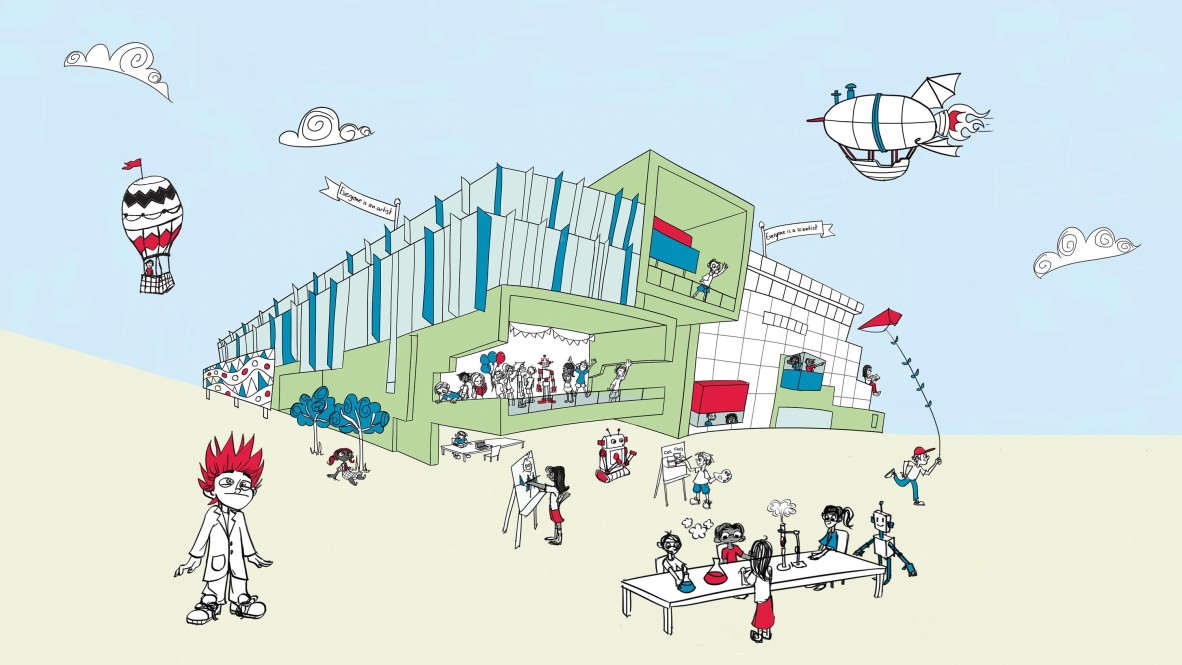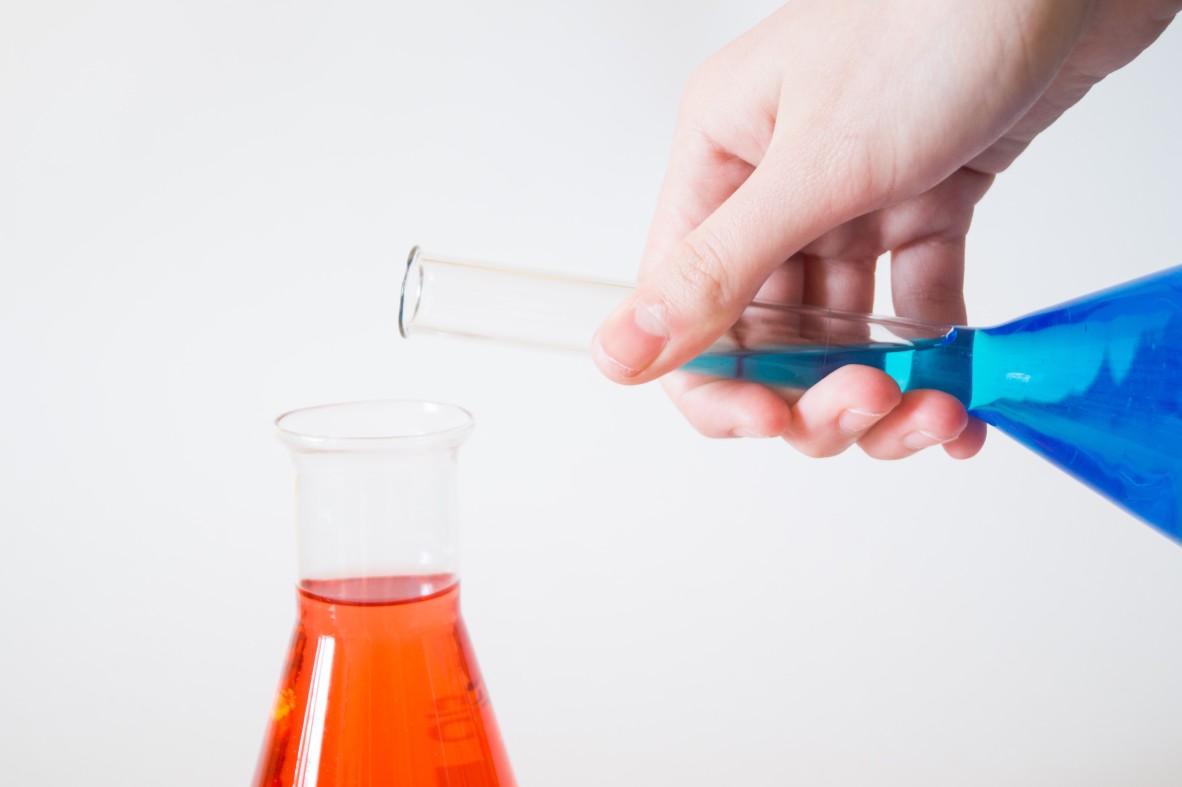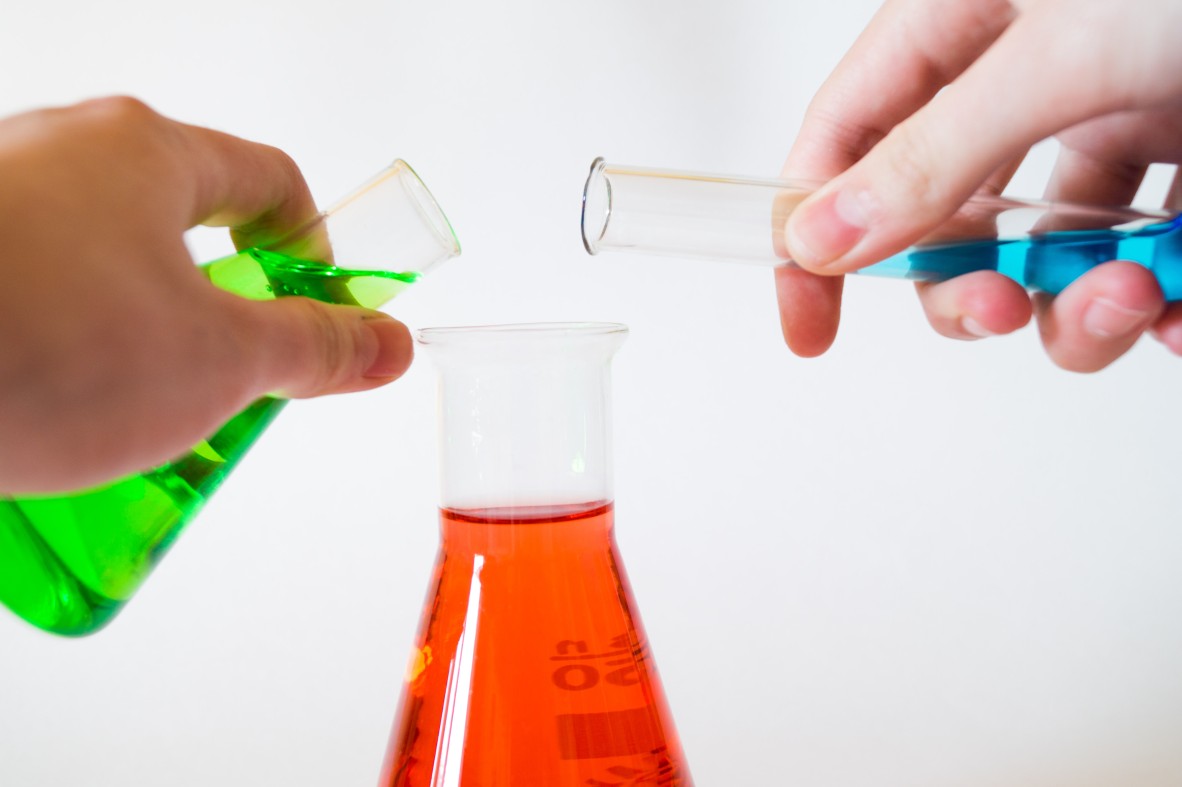
Fun Palace (3-4 October) is a weekend where everyone is an artist and everyone is a scientist! This year we are marking Fun Palace in a COVID-19 friendly way and our resident scientist, Dr Peter Musk, has a couple of chemistry experiments to try at home!
For parents and caregivers
In times past, a career in STEM started with a chemistry set. You can still buy chemistry sets; the range of experiments greatly reduced due to modern health and safety, they’re expensive, and there’s as strong chance it would be declared a dangerous good that will make home delivery complicated.
If you are more interested in exploring the science of materials than lining up test tubes in a rack, there are still lots of experiments you can do at home, with materials from the supermarket or pharmacy, and glassware rescued from the recycling box. These experiments are what we describe here.
Think about disposal after the fun is over
Safety is the first thing you need to consider before doing any science, and all of the experiments described are best done with some adult supervision. Make sure that any glassware or other things you use are kept only for doing science, and do not end up back on the dinner table. Think about disposal after the fun is over, and don’t poison the grass or your worm farm by careless acts. Most of the chemicals used can be washed down the sink with plenty of water, and the solids can be wrapped and put straight in the bin. Some things you can buy in the hardware shop are dangerous – like hydrochloric acid cement cleaner, or caustic soda for drains – but all will have safety instructions on the label. READ THE SAFETY INSTRUCTIONS before use and always, always follow them.
Some of these experiments are more complicated (and maybe require special equipment, like a hot plate), but many only need patience, a bit of improvisation and a trip to the shops. The experiments are most suited to younger scientists. Use your creativity to adapt whatever containers and tools you have to do the experiments – chemistry happens in a clean recycled jam jar, just as well as in a borosilicate beaker.

Photo by Alex Kondratiev on Unsplash
For children
Chemistry is not always about blowing things up or making a stink bomb to liven up that boring maths lesson – chemistry can use electricity to coat objects with shiny metal, or vinegar to change the colour of beetroot juice. These experiments are things you can do with stuff from kitchen cupboards (the one under the sink is usually a good start) and empty jars rescued from the recycling.
Follow the instructions carefully, and only use the quantities described
Always, always talk to an adult before you start – and make sure they know you will be safe and careful in your investigating. Besides, you might need a trip to the shops to get some of the things you need. Follow the instructions carefully, and only use the quantities described – more is not always better, and it will just give you more mess to clean up at the end. After you have done an experiment a couple of times, you might want to try something further using different things – that is how science works! Just make sure you discuss it with an adult first (which is also how science works).
Scientists always write down what they do, and keep recipes and drawings of their equipment so they can share what they find with others, It also helps to be able to go back to exactly what you did if something goes wrong, or as a place to start in a new direction. Making your own Laboratory Notebook might be a good idea.
Sometimes experiments produce something unexpected (which is exciting) and sometimes nothing happens (which is less exciting), but it is all science. Sorting out what works and what doesn’t (and imagining why) is where scientists begin when they come up with theories, and theories give you ideas about what to try next. Have fun!
Experiments:

Photo by Alex Kondratiev on Unsplash
Comments
Your email address will not be published.
We welcome relevant, respectful comments.